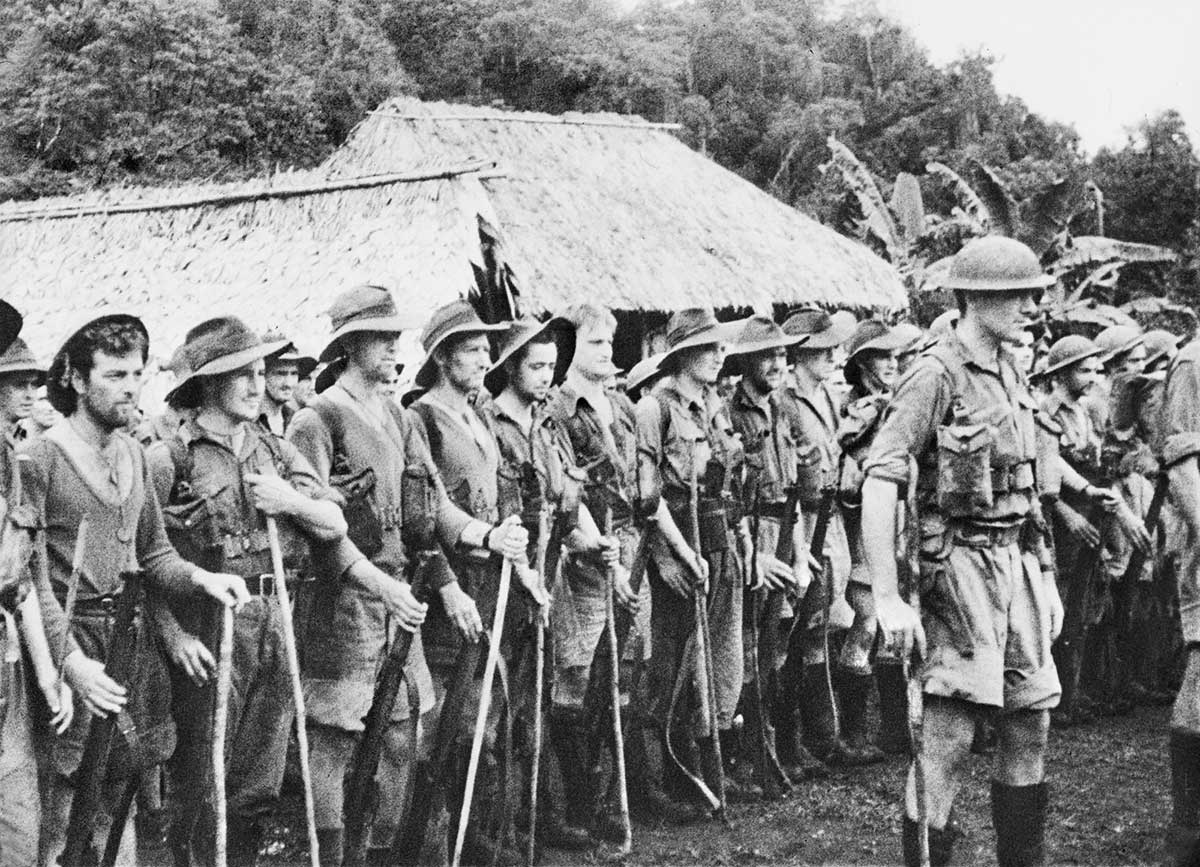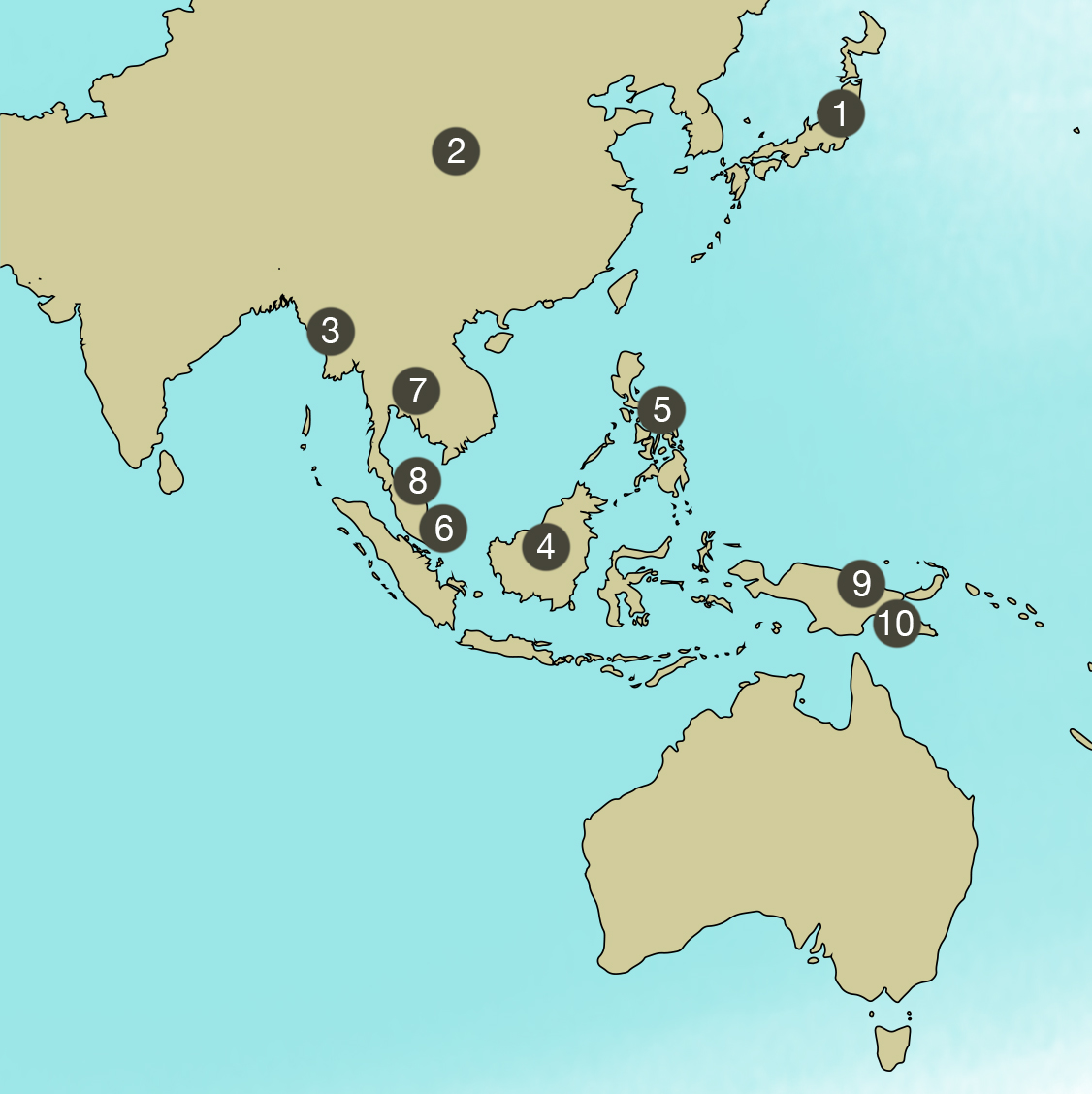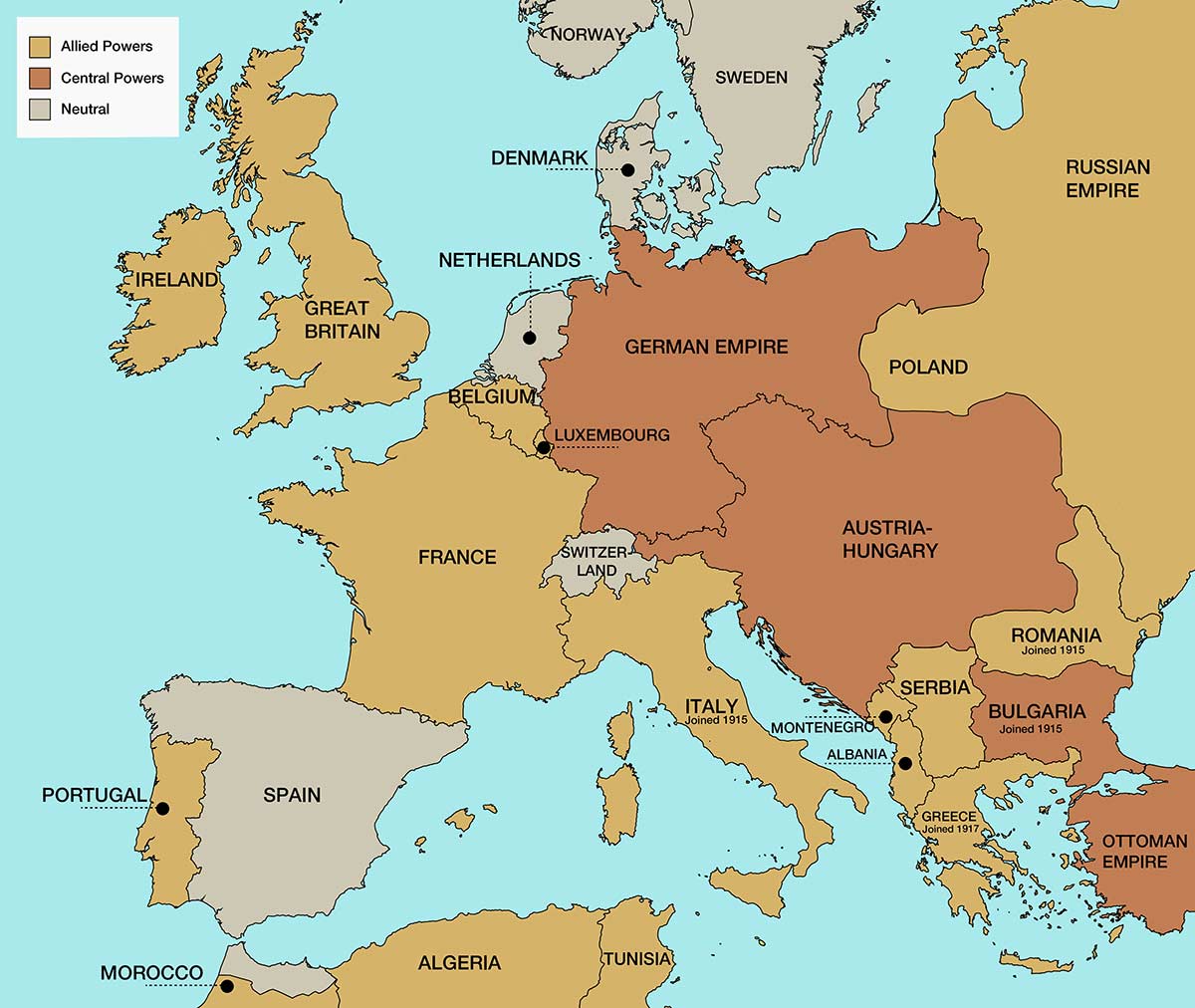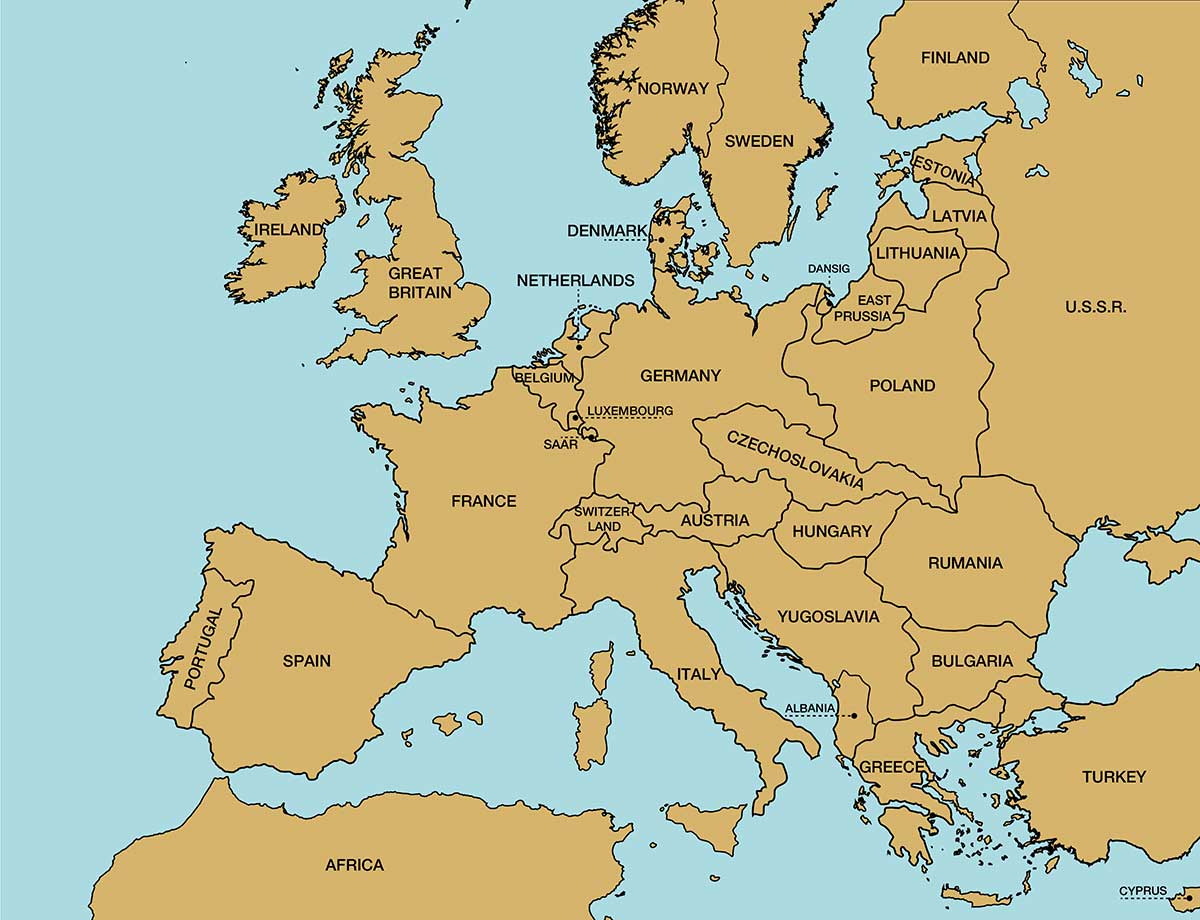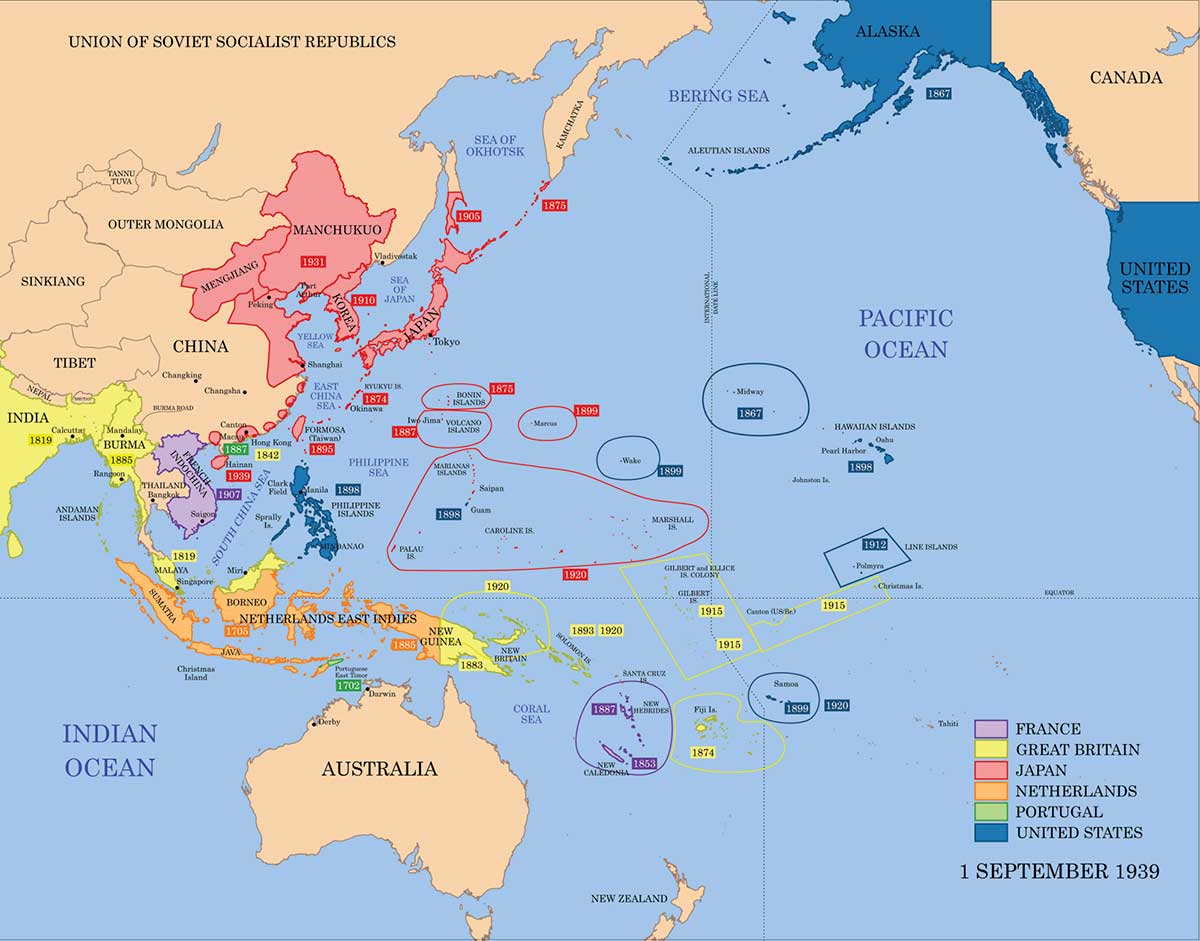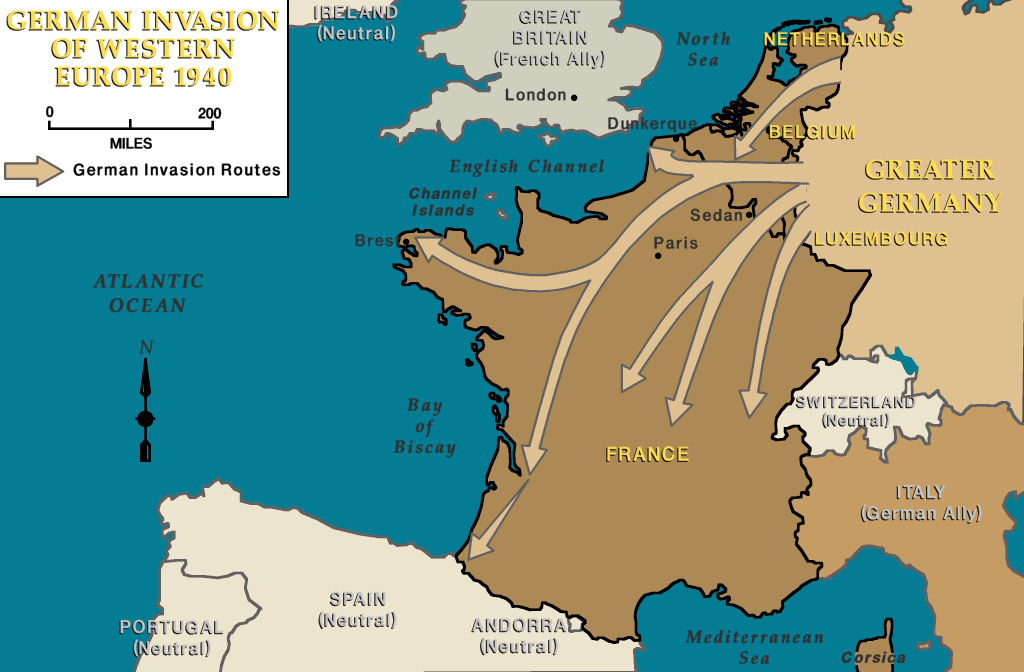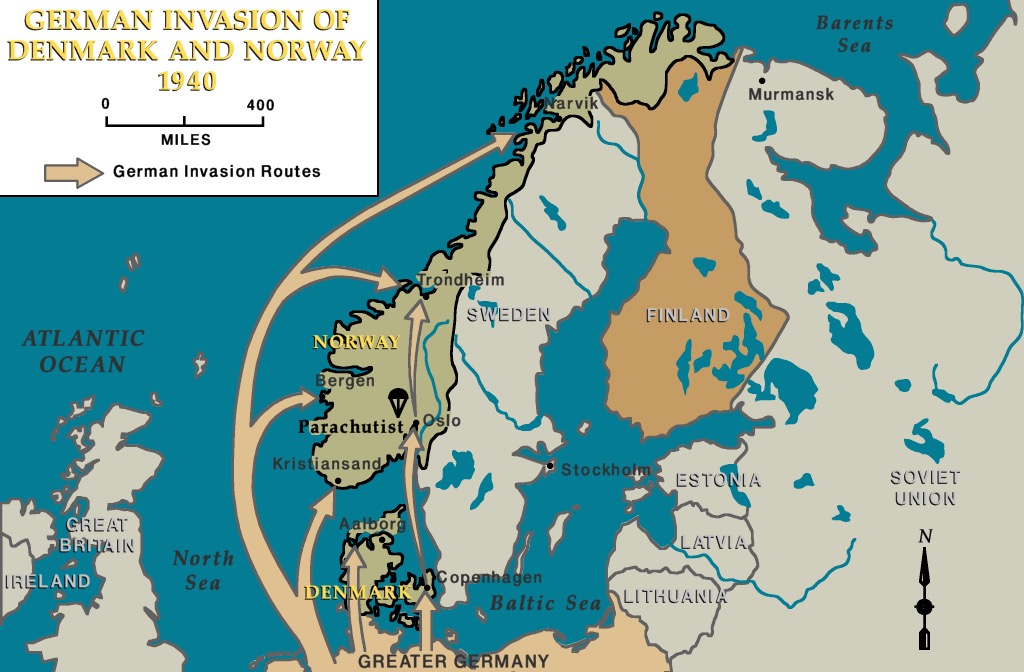Learning module:
Second World War Defining Moments, 1939–1945
Investigation 1: The causes and course of the Second World War
1.4 The story of the Second World War
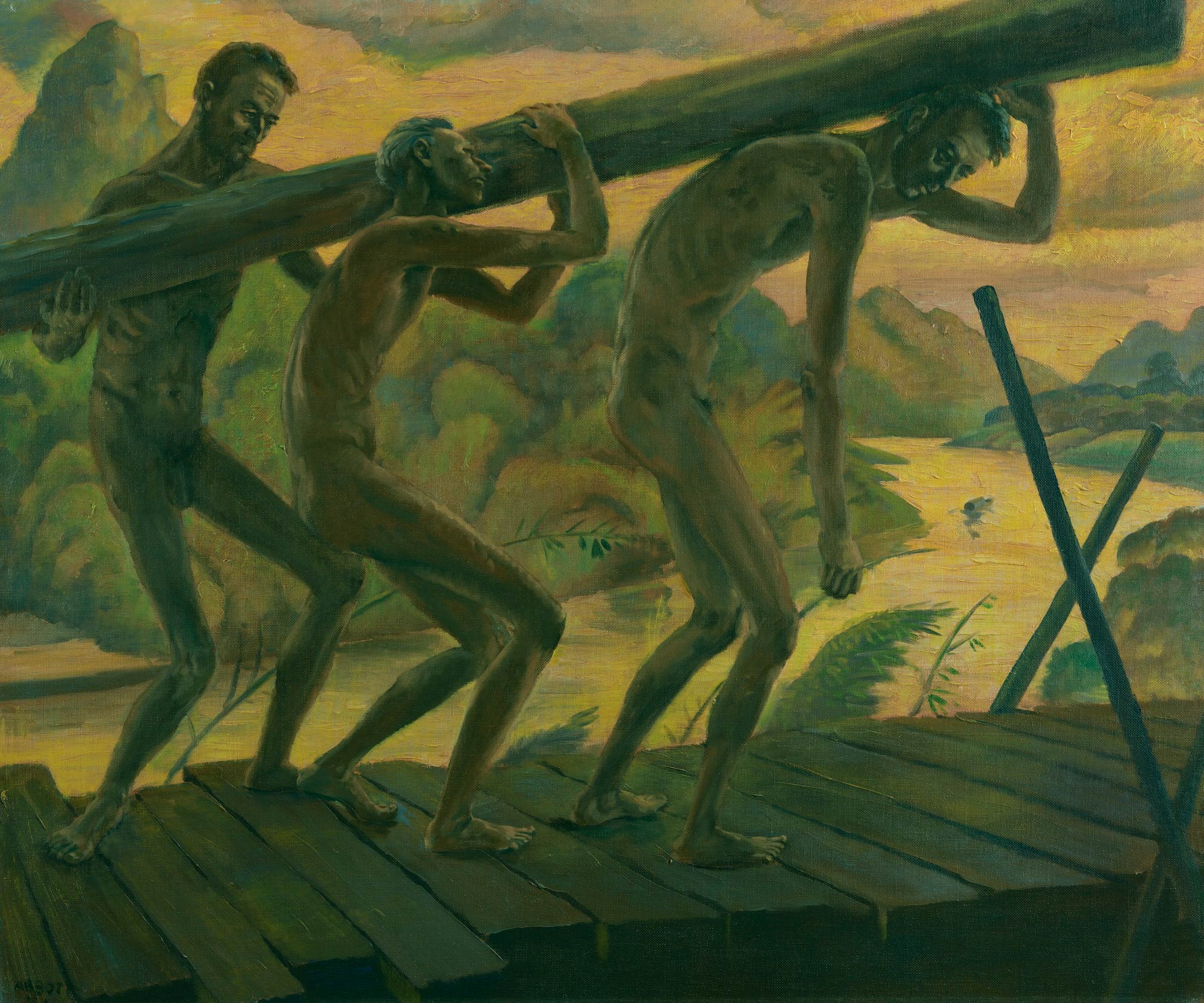
Here is some background information about the causes and the course of the Second World War. Choose an investigation and use the information to help you answer some of your Causes and course: Key questions.
The end of the First World War
The 1930s and the rise of Nazism
War in Europe and the Mediterranean area
The end of the First World War
In September 1939 the major European powers of Britain and France went to war against Germany. This was only 20 years after the ‘war to end all wars’, the Great War of 1914–1918. Why were nations that had suffered so much barely 20 years earlier prepared to start this suffering all over again?
The causes of the Second World War can be traced back to the end of the First World War. In 1918, Germany agreed to an Armistice. A series of treaties were signed as part of the peace process. The main treaty was the Treaty of Versailles, between the Allies and Germany. There were four other treaties signed with Germany’s allies: Austria, Hungary, Bulgaria and the Ottoman Empire (mainly Turkey). These treaties stressed that Germany had caused the war and demanded that the defeated nations must disarm, pay reparations for the damage caused by the war, and lose territory and resources. New countries were formed by carving up the old empires.
This included German colonies in New Guinea and the Pacific. The Japanese were granted control over some of these areas.
A major problem with the treaties — especially the Treaty of Versailles with Germany — was the sense of resentment and injustice created among the populations of the defeated nations, especially Germany. Many Germans, soldiers in particular, believed that they had not really been defeated, but had suffered a ‘stab in the back’ by the politicians (their leaders). This meant that they had lost faith in their country’s leadership, and were ready to tear down the politicians who they believed had betrayed them. The new boundaries that were drawn to create new nations generally created an unstable mix of ethnic groups, especially of German minority groups. In time, German nationalists came to power promising to overturn the Treaty of Versailles and restore German pride by moving to regain territory, resources and people, and to expand even beyond what it had lost.
The 1930s and the rise of Nazism
From the moment Adolf Hitler gained control of Germany in 1936 he implemented a policy of regaining lost territory, resources and people, and secretly rearming Germany. The main European powers, Britain and France, saw some justice in Hitler’s claims, and were prepared to appease him to avoid another terrible world conflict. Australia backed Britain’s attempts at appeasement. The United States was isolationist and did not want to get involved. The Soviet Union (Russia) feared Germany, but had secretly made a peace pact with German nationalist leaders in return for some of the ‘spoils’ when Germany invaded other territories. As a result Germany pushed on unstopped until Hitler invaded Poland in 1939, despite promises that he would not, and Britain and France declared war. Australia supported the declaration of war, as did the other British Dominions of Canada, South Africa, India and New Zealand. Australia was now at war with Germany.
At the same time, Japan was also expanding its empire by invading China. Japan was one of the Allies in the First World War, and had westernised and modernised to become a powerful industrial nation. It lacked natural resources to support its industrialisation, so began expanding by force into areas that had resources. The Japanese political system was headed by an Emperor, but he was largely a figurehead, and when a strongly nationalist group of army officers gained political influence they set Japan on its brutal military expansion into northern China in 1937. Japan later used the European war situation to seize control of much larger areas of Asia.
War in Europe and the Mediterranean area
For several months after the declaration of war there was little fighting in Western Europe. Then, in May 1940, Germany unleashed its Blitzkrieg, or ‘Lightning War’. This involved air support coordinating with highly motorised vehicles such as light tanks to race forward engaging French, Belgian and British troops along the border areas with Germany. German troops quickly defeated the Allied forces. Belgium and France surrendered, and the Nazis established the new pro German Vichy French government. The British Army was nearly destroyed at Dunkirk. German bombers started attacking British cities and airbases in preparation for an invasion. During the Battle of Britain the British air force, including fighter pilots and crews from across its Empire, kept control of the air, and thus stopped the planned invasion by sea.
Italy entered the war on Germany’s side in June 1940.
After Germany failed to take Britain, the European war changed to one of largely aerial warfare, as British bombers attacked German industrial cities and centres. This aerial warfare continued for the remainder of the war, with large numbers of crew from Australia and across the British Empire flying bombers during the British attacks. The majority of Australian battle deaths in this war over Europe were amongst bomber crews.
During 1940 and 1941 British troops — including Australian Army troops, naval ships and air force aircraft — were fighting German, Italian and Vichy French forces in North Africa, Syria, the Mediterranean Sea, Greece and Crete. There were both victories, in North Africa and Syria, and defeats, especially in Greece and Crete, where thousands of Australians were taken prisoner by the Germans.
As Germany gained control of Europe, it accelerated its program of discrimination against, then persecution and murder of, the Jews of Europe — the Holocaust. This involved the systematic control and later deportation of the Jews of Europe to many concentration camps, including several extermination camps in Eastern Europe as this map indicates.

The European war expands
In June 1941 the war entered a new phase when Germany broke its non-aggression pact with the Soviet Union and invaded.
This war on the eastern front now drew in huge numbers of German troops and equipment, resulting in the greatest casualty figures of any period in the war. The ultimate defeat of Germany in the Soviet Union meant that it would lose the European war, though not until there had been several years of savage fighting.

The Pacific war starts
The Asian war front also expanded in December 1941 when Japan attacked the United States naval base at Pearl Habor, Hawaii, bringing the United States into the war. At the same time Japan launched invasions of Thailand, Malaya, Singapore, the Dutch East Indies (Indonesia), the Philippines, Papua and New Guinea, New Britain and the Solomon Islands. The Pacific war had begun.
From 1942, the war was being fought on many fronts - Western Europe, North Africa and the Mediterranean, China, the Pacific and south-east Asia.
To the north of Australia, the Japanese stormed through south-east Asia and into the Pacific, defeating all before them. Over 1800 Australian troops died in combat. Nearly 22,000 were taken prisoner in Malaya, Singapore and Netherlands East Indies.

In February 1942 the Japanese bombed Darwin. Over the following months Darwin, Broome and several small settlements in the north of Australia were bombed repeatedly. Japanese submarines mined shipping routes along the east and south coasts of Australia, attacked merchant ships and even a hospital ship, briefly shelled Sydney and Newcastle, and even launched midget submarines into Sydney Harbour. There was great fear in Australia that Japanese forces might invade the Australian mainland. In the aftermath of the Fall of Singapore in February 1942, an embarrassing and disastrous defeat for the British, Prime Minister Curtin realised that the era of relying on Britain for protection was over, and now looked to the United States to take over as Australia’s powerful friend and ally in the area. Curtin recalled as many Australian troops as possible from the North African and Middle East campaigns to come to the defence of Australia, despite the opposition of British Prime Minister Churchill, who wanted them to be used in Burma.
The war turns
Slowly, the Allies started to take control of the Pacific and south-east Asian area. In the Coral Sea, to the north-east of Townsville, American and some Australian ships broke up a Japanese invasion fleet sailing to take the strategic port and airfield of Port Moresby.
By 1943 Australia had introduced a limited form of overseas conscription. These poorly-trained troops halted the alternative Japanese advance overland along the Kokoda Trail — across the Owen Stanley Mountains in Papua between Gona and Port Moresby — until veteran troops from the Middle East could be rushed forward to push the Japanese back. Combining with American troops, the Australians defeated the Japanese at Buna, Gona and Sanananda, ending the threat to Port Moresby. The defeat of the Japanese fleet by United States ships at Midway ended any chance that Japan could now invade Australia. Japan was now losing all it had gained, though at the cost of thousands of Allied lives in hard and often savage fighting.
1943 and 1944
During 1943 and 1944 the Allies slowly defeated the enemy on all fronts, though with great loss of life and suffering. Italy surrendered in September 1943, and a month later joined the Allies. The British and Americans escalated their day and night bombing of German cities and strategic sites; the Russians continued to push the German army back towards Berlin; Americans and Australians continued to fight to take back areas of Papua, New Guinea and New Britain. Australians were also involved in the continuing air and sea campaigns. As they gradually won back areas, the savage Japanese treatment of prisoners of war and local civilians became evident. Both German and Japanese officials were charged and convicted of war crimes after the end of the fighting.
On 4 June 1944 a huge Allied force landed in France for the D-Day invasion. The Allies pushed eastwards towards Berlin, while the Soviet Union pushed westward. German forces surrendered on 8 May 1945, which became known as VE (Victory in Europe) Day.

Japan now had to be defeated in the Pacific and south-east Asia. Australian troops were deployed to fight in Borneo, while American forces ‘island hopped’ towards Japan.
The Japanese pledged to fight to the death despite the clear evidence that they would lose. While Japanese troops refused to surrender and fought to the death in all areas they had controlled, the Americans used their total control of the skies to firebomb Japan’s major cities and industrial areas. The prevalence of wood in Japanese houses meant that huge fires broke out during the American bombing, totally destroying Tokyo in particular. Despite this the Japanese government, headed by the figurehead Emperor, refused to surrender, and vowed to fight to the last Japanese person rather than allow an invasion of the home islands.
Faced with having to invade Japan to force a final surrender, and likely heavy Allied casualties, the Americans dropped an atomic bomb on Hiroshima, and then one on Nagasaki, in August 1945. This finally forced the Japanese to surrender.

1945 and after
During the Second World War an estimated 50–55 million civilians and 20–25 million soldiers died, whole cities were destroyed, economies were ruined and millions of refugees were displaced. Atomic weapons had been deployed during war, on cities, for the first time ever. Estimates of deaths include:
- 20-27 million soldiers and civilians in the Soviet Union
- 15-20 million soldiers and civilians in China
- 5.3 million Germans
- nearly 6 million Poles (including around 3 million Jews killed during the Holocaust)
- approximately 6 million European Jews in total
- 3 to 4 million Indonesians
- 2.2 million Indians
- 2.5 to 3.1 million Japanese
- between 1 and 2.2 million Indo-Chinese.
Australia lost 40,000 lives. One in three of those taken prisoner by the Japanese died from starvation, beatings, overwork and controllable diseases.
Three great challenges after the end of the Second World War were:
- to set up a new international system of dispute settlement, to be called the United Nations
- to restore the defeated and devastated enemies to economic prosperity and political stability
- to start a process of decolonisation to give independence to the countries of Africa and Asia that had been dominated for so long by the European colonial powers.
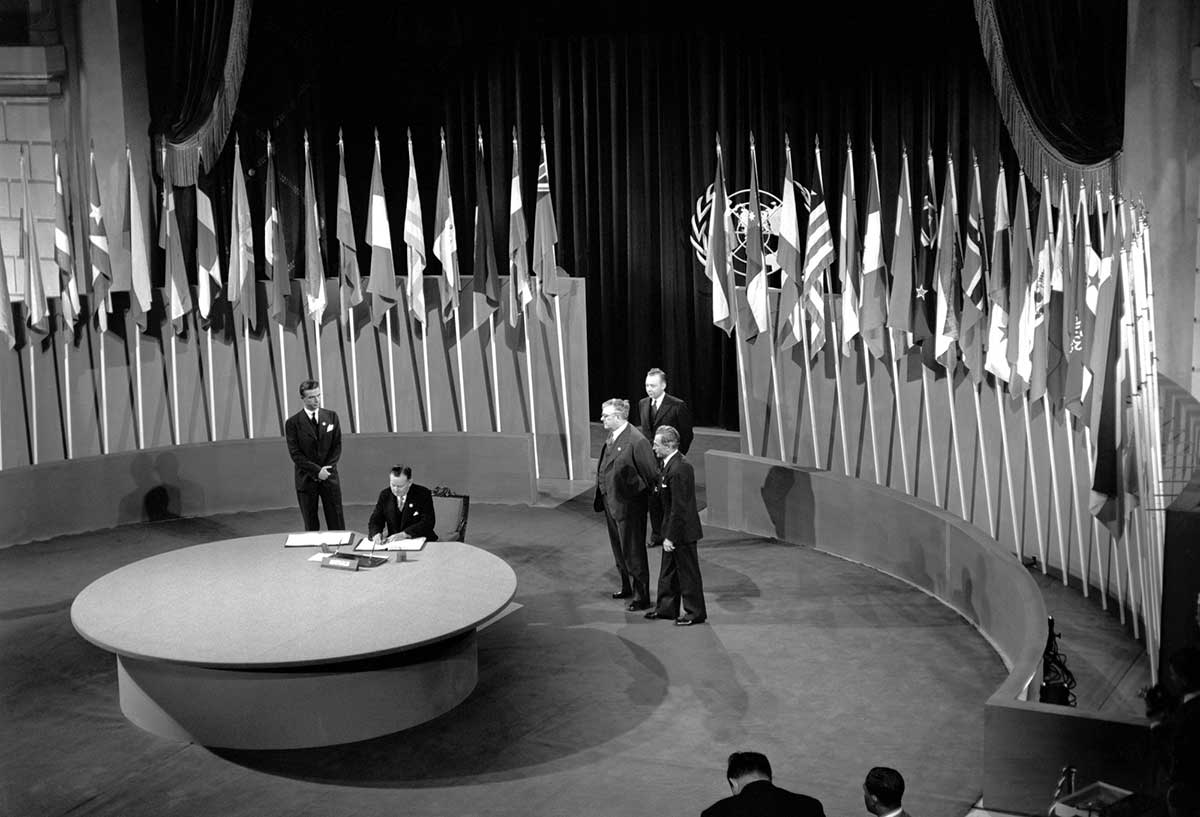
The countries of Western Europe and Japan, which were under American control, were provided funds to rebuild their shattered economies and encouraged to introduce democractic reforms. The areas that remained under Russian control became part of the Soviet economic and political system until the collapse of the Soviet Union after the fall of the Berlin Wall in 1991. This development of and competition between the two competing political and economic systems was the ‘Cold War’ that saw many nations aligned with one or the other of the two competing systems.
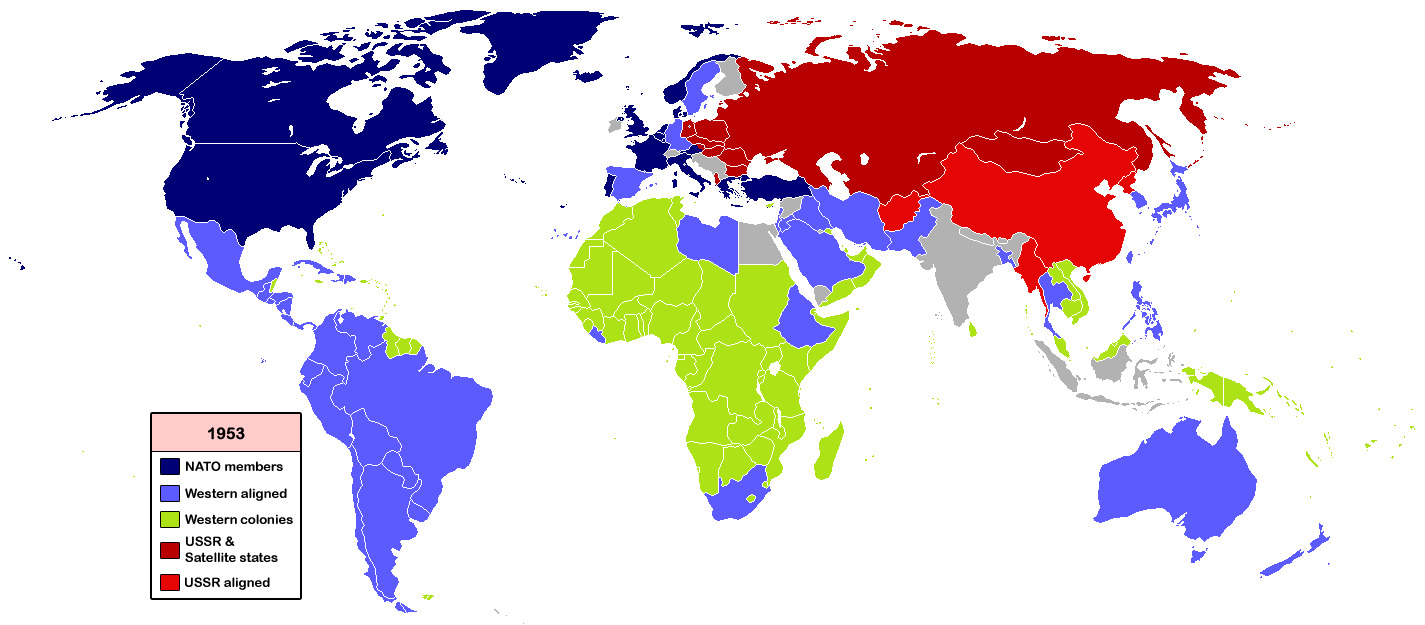
For Australia, the world had changed. Following the fall of Singapore and the severe weakening of it naval forces, Britain could no longer guarantee its security. Australia supported independence for its largest neighbour, Indonesia, but the communist nationalists looked likely to gain control there and in many other south-east Asian nations, which would threaten to surround Australia with hostile political and economic nations.
Australia was a leader in establishing the new world body, the United Nations, to support peace and freedoms, and to give as much influence as possible to other smaller nations against the dominance of the main world powers.
Australia also had to look to new sources of immigration to build its population and economy. Initially it looked to the displaced people of Eastern Europe, and later to Asia.
All this meant that Australia would have to decide how far it was prepared to commit itself to American foreign policy aims so as to keep influence with and ensure protection by the United States in the new postwar world.






